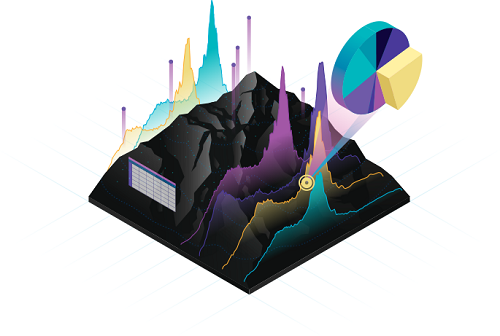Geospatial Analytics Market: Transforming Location Intelligence
The geospatial analytics market is experiencing significant growth as organizations recognize the value of location intelligence in making informed business decisions. Geospatial analytics involves the collection, analysis, and interpretation of data related to geographic locations. This market offers a wide range of solutions and technologies that enable organizations to gain valuable insights from spatial data, empowering them to optimize operations, enhance customer experiences, and drive innovation.
The Geospatial Analytics market size is projected to grow from USD 89.239502 billion in 2024 to USD 209.81 billion by 2032, exhibiting a compound annual growth rate (CAGR) of 11.28% during the forecast period (2024 - 2032).
Get a sample PDF of the report at –
https://www.marketresearchfuture.com/sample_request/5801
Competitive Analysis:
The geospatial analytics market is highly competitive, with numerous players offering a diverse range of solutions and services. These companies compete based on factors such as data accuracy, real-time analytics capabilities, ease of use, and integration with other data sources. To gain a competitive edge, vendors invest in advanced technologies, such as artificial intelligence and machine learning, to enhance their analytics capabilities. Additionally, partnerships with data providers, industry experts, and government agencies are key strategies adopted by vendors to expand their market presence and offer comprehensive solutions to their customers.
Market Drivers:
Several factors are driving the growth of the geospatial analytics market. Firstly, the increasing availability of spatial data from various sources, such as satellites, drones, and sensors, is fueling the demand for geospatial analytics solutions. This data provides organizations with valuable insights into patterns, trends, and relationships in their geographic context. By leveraging these insights, organizations can make data-driven decisions, optimize resource allocation, and identify new business opportunities.
Secondly, the growing adoption of Internet of Things (IoT) devices and smart technologies is generating vast amounts of location-based data. Geospatial analytics enables organizations to harness this data and derive meaningful insights to improve operational efficiency and enhance customer experiences. For example, in the transportation industry, geospatial analytics can help optimize route planning, reduce fuel consumption, and improve logistics management.
Market Restraints:
Despite the growth prospects, the geospatial analytics market faces certain challenges. One of the significant restraints is the complexity of integrating and analyzing diverse datasets. Geospatial analytics requires the integration of spatial data with other types of data, such as customer data or demographic data. This integration can be a complex process, requiring specialized skills and robust data management infrastructure.
Another challenge is the need for data quality and accuracy. Geospatial analytics heavily relies on accurate and up-to-date spatial data. Inaccurate or outdated data can lead to flawed analysis and decision-making. Organizations must ensure the quality and reliability of their spatial data sources and invest in data cleansing and validation processes.
Segment Analysis:
The geospatial analytics market can be segmented based on various criteria, including industry verticals and applications. Across industry verticals, sectors such as transportation, logistics, retail, agriculture, and urban planning are witnessing significant adoption of geospatial analytics solutions. Applications include location-based marketing, risk assessment and disaster management, environmental monitoring, and infrastructure planning.
Browse a Full Report –
https://www.marketresearchfuture.com/reports/geospatial-analytics-market-5801
Regional Analysis:
The geospatial analytics market exhibits regional variations based on factors such as technological advancements, government initiatives, and industry maturity. North America currently dominates the market, driven by the presence of major technology companies and a well-established geospatial industry. Europe is also experiencing substantial growth, with organizations recognizing the value of location intelligence in various sectors. The Asia-Pacific region is expected to witness rapid growth, fueled by the increasing adoption of IoT technologies and the growing demand for smart city initiatives.
The geospatial analytics market offers organizations a valuable tool to leverage location intelligence and gain insights from spatial data. By harnessing the power of geospatial analytics, organizations can make informed decisions, optimize operations, and drive innovation. However, challenges such as data integration and data quality must be addressed to maximize the value of geospatial analytics solutions. As the market continues to evolve, vendors must focus on advancing their analytics capabilities and collaborating with data providers and industry experts to stay competitive in this dynamic industry.
Top Trending Reports:
Internet of Things Testing Market
Privileged Identity Management Market
Contact
Market Research Future (Part of Wantstats Research and Media Private Limited)
99 Hudson Street, 5Th Floor
New York, NY 10013
United States of America
+1 628 258 0071 (US)
+44 2035 002 764 (UK)
Email: sales@marketresearchfuture.com
Website: https://www.marketresearchfuture.com



